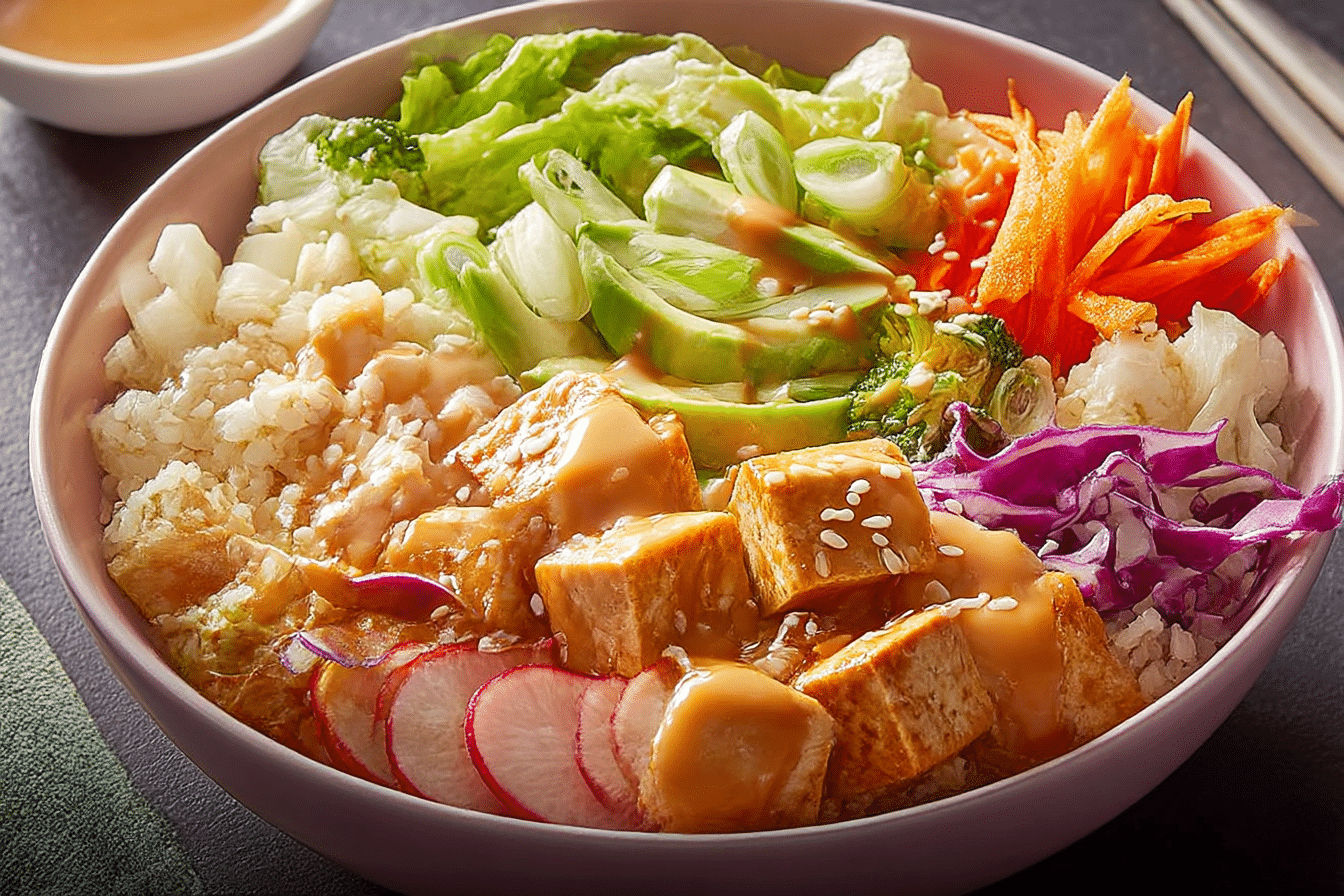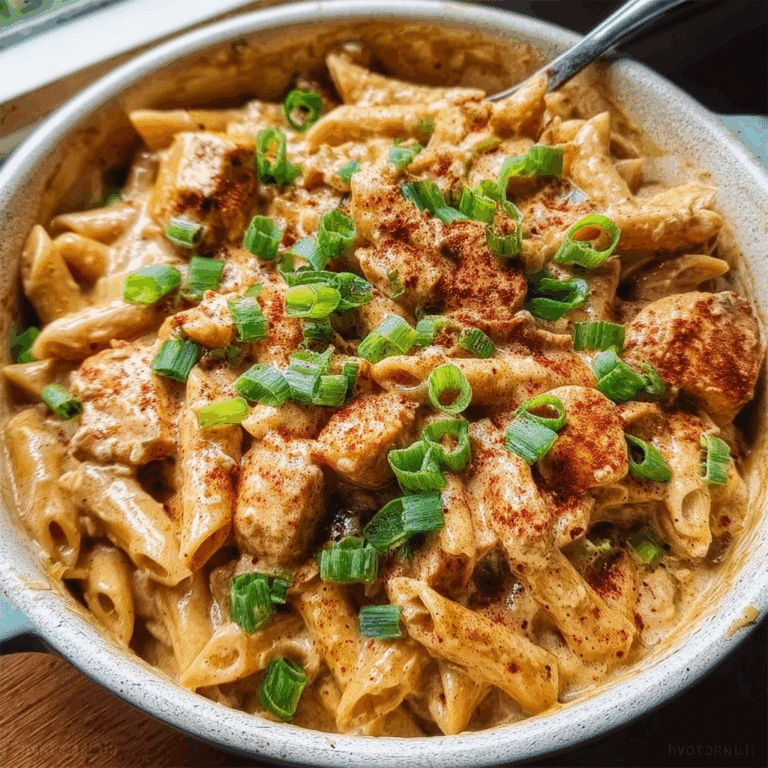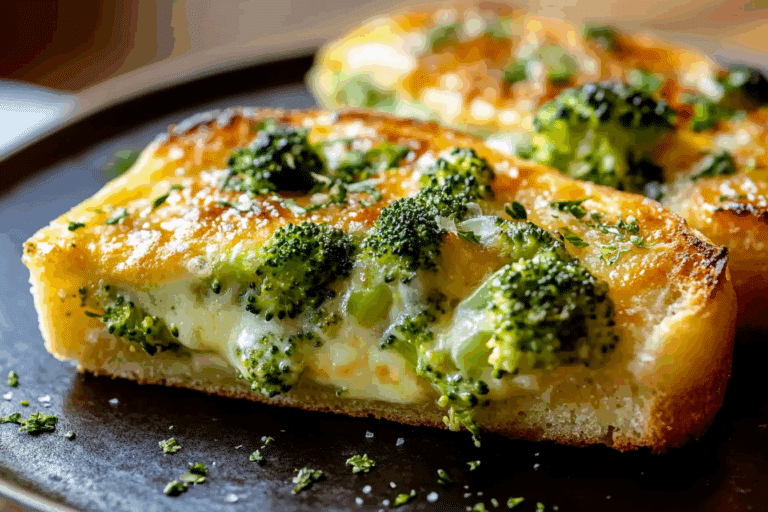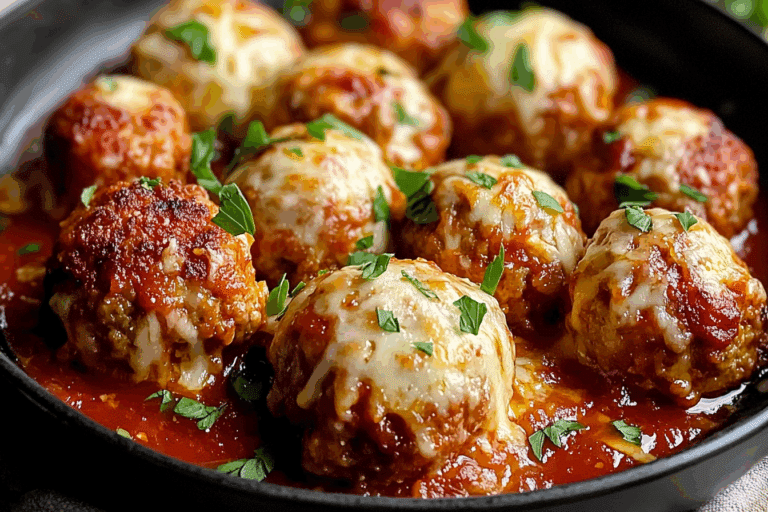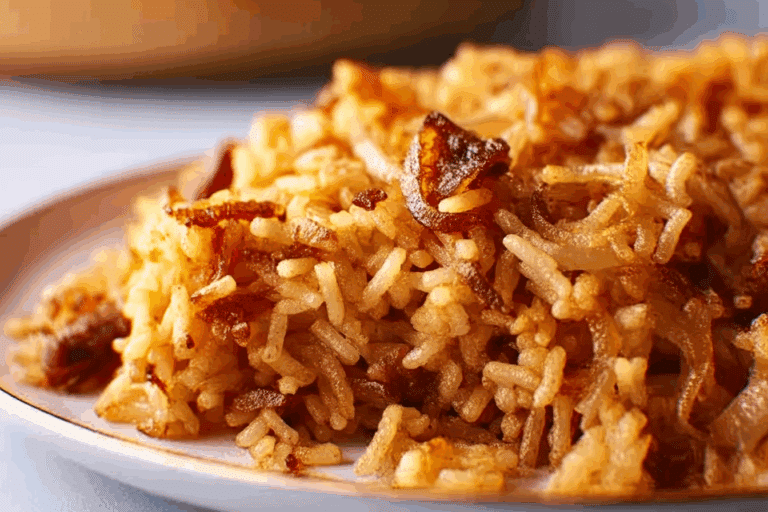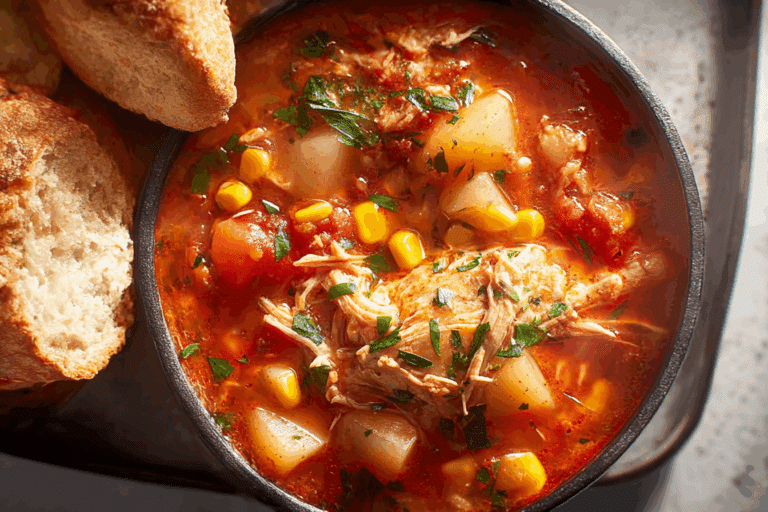Tofu and Veggie Buddha Bowl With Miso Dressing
Picture this: a bowl brimming with colorful vegetables, perfectly crisp tofu, and a creamy, umami-rich miso dressing that ties it all together. Every forkful of this Buddha bowl is a celebration of balance—textures that crunch and melt, flavors that zing and soothe. It’s not just food, it’s nourishment in its most beautiful form. Whether you’re seeking a light lunch, a nourishing dinner, or a reset after indulgence, this bowl will have you feeling fresh and energized.
Behind the Recipe
The first time I made a Buddha bowl, it was out of sheer curiosity and an overflowing fridge. I had leftover roasted sweet potatoes, half a block of tofu, some greens, and a jar of miso I bought on a whim. I threw it all together, drizzled it with a quick dressing, and boom—a new obsession was born. Since then, I’ve refined the formula, creating this go-to version that brings together all my favorite elements in one comforting, satisfying dish.
Recipe Origin or Trivia
Buddha bowls, sometimes called nourish bowls, trace their origins to the concept of balance and mindfulness in eating. The term likely comes from the idea of a “Buddha’s belly”—a bowl so full and round it mimics the image of a happy Buddha. While not a traditional dish in any specific cuisine, it pulls inspiration from East Asian flavors, macrobiotic meals, and plant-based philosophies. The miso dressing adds a deeply Japanese twist, transforming a humble bowl into something rich and unforgettable.
Why You’ll Love Tofu and Veggie Buddha Bowl With Miso Dressing
Let’s break down why this nourishing bowl might just become your new favorite ritual:
Versatile: Swap in whatever veggies or grains you have on hand.
Budget-Friendly: Uses simple, accessible ingredients you likely already have.
Quick and Easy: Comes together in under 30 minutes with minimal fuss.
Customizable: Perfect for meal prep and endless variations.
Crowd-Pleasing: Even meat-eaters enjoy the satisfying flavors and textures.
Make-Ahead Friendly: Prep components in advance for easy lunches or dinners.
Great for Leftovers: Leftover roasted veggies and tofu work perfectly here.
Chef’s Pro Tips for Perfect Results
Buddha bowls are simple in spirit, but a few expert tips can elevate them to greatness:
- Press your tofu: Remove excess moisture for better crispiness when roasting or pan-frying.
- Use contrasting textures: Combine raw, roasted, and sautéed veggies for dynamic bites.
- Balance the colors: A vibrant bowl isn’t just pretty—it’s packed with nutrients.
- Double the dressing: It keeps well and works great on salads or grains throughout the week.
- Let the bowl rest before eating: A few minutes lets the flavors meld beautifully.
Kitchen Tools You’ll Need
Nothing fancy needed—just a few staples:
Tofu Press or Heavy Pan: Ensures tofu is firm and crisp-ready.
Baking Sheet: For roasting vegetables evenly.
Blender or Whisk: For a creamy, smooth miso dressing.
Mixing Bowls: Useful for tossing and layering ingredients.
Sharp Knife: For chopping veggies precisely.
Ingredients in Tofu and Veggie Buddha Bowl With Miso Dressing
Each component plays a vital role in this vibrant bowl of goodness. Here’s what you’ll need:
- Extra-Firm Tofu: 1 block (14 oz), pressed and cubed – Protein-rich base with a lovely texture when roasted.
- Olive Oil: 2 tablespoons – Helps the tofu and vegetables crisp up while roasting.
- Tamari or Soy Sauce: 1 tablespoon – Adds savory depth to the tofu.
- Sweet Potato: 1 large, diced – Provides natural sweetness and a hearty bite.
- Broccoli Florets: 2 cups – Roasted for a slightly nutty crunch.
- Carrot: 1 large, shredded – Adds color and crunch in its raw form.
- Red Cabbage: 1 cup, thinly sliced – Offers vibrant hue and refreshing texture.
- Cooked Brown Rice or Quinoa: 2 cups – Hearty grain base that holds everything together.
- Avocado: 1, sliced – Creamy element that brings luxurious mouthfeel.
- Sesame Seeds: 1 tablespoon – Nutty garnish with a satisfying crunch.
For the Miso Dressing:
- White Miso Paste: 2 tablespoons – Umami-rich base for the dressing.
- Rice Vinegar: 1 tablespoon – Adds a tangy note that balances the miso.
- Maple Syrup: 1 teaspoon – Brings gentle sweetness to round out the flavors.
- Toasted Sesame Oil: 1 teaspoon – Infuses the dressing with deep, nutty aroma.
- Water: 2–3 tablespoons – Thins the dressing to the right consistency.
Ingredient Substitutions
No need to worry if you’re missing a few ingredients—there’s room to adapt.
Tofu: Tempeh or chickpeas make great swaps.
Sweet Potato: Use butternut squash or regular potatoes.
Red Cabbage: Try baby spinach, kale, or mixed greens.
Brown Rice/Quinoa: Any cooked grain like farro or couscous works well.
White Miso Paste: Substitute with yellow miso or a splash of tahini.
Maple Syrup: Honey (if not vegan) or agave can be used instead.
Ingredient Spotlight
Miso Paste: A traditional Japanese seasoning made from fermented soybeans, rice, or barley. It’s deeply savory and salty, adding a rich umami layer that transforms simple dressings into standout sauces.
Sweet Potato: More than just a comforting root veg, sweet potatoes offer natural sweetness, a dose of fiber, and that gorgeous golden-orange hue that brightens any bowl.
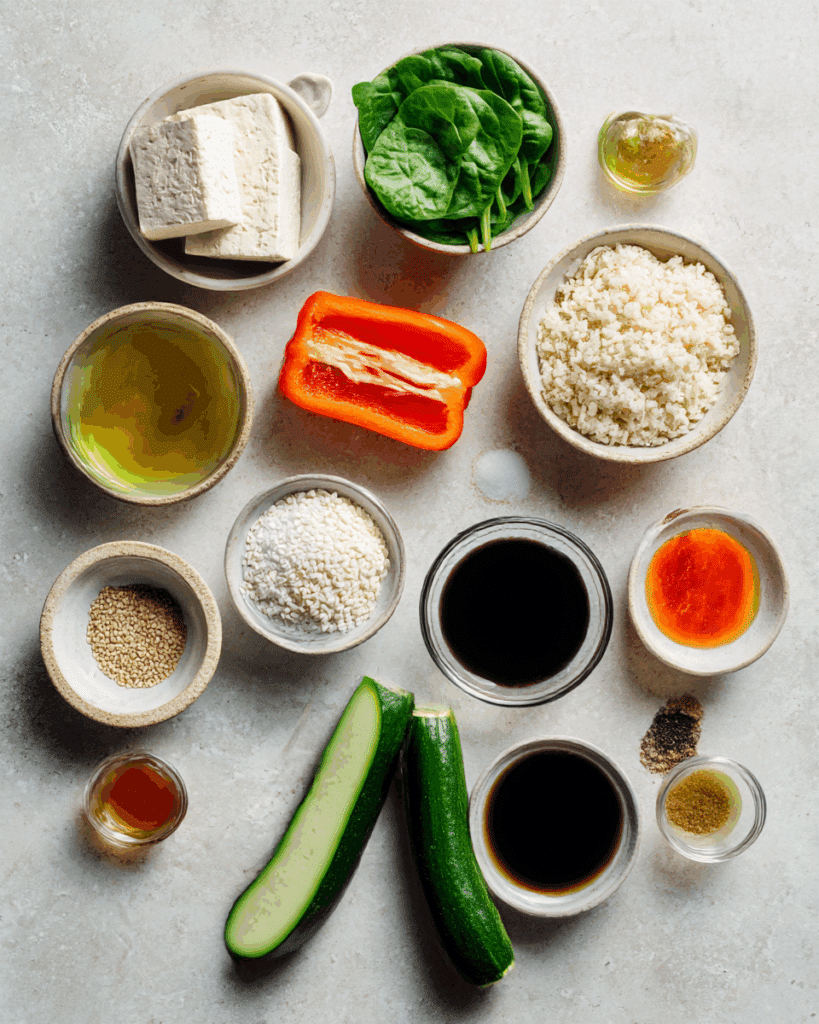
Instructions for Making Tofu and Veggie Buddha Bowl With Miso Dressing
This bowl comes together in layers, and every layer adds flavor and texture. Here’s how to build it step by step:
- Preheat Your Equipment: Set oven to 400°F (200°C). Line a baking sheet with parchment paper.
- Combine Ingredients: In a bowl, toss tofu cubes with olive oil and tamari. Separately, toss sweet potatoes and broccoli with oil, salt, and pepper.
- Prepare Your Cooking Vessel: Spread tofu and veggies on the baking sheet in a single layer. Roast for 25 minutes, flipping halfway.
- Assemble the Dish: In a small bowl or blender, whisk or blend miso paste, rice vinegar, maple syrup, sesame oil, and water until smooth. Adjust consistency as needed.
- Cook to Perfection: While tofu roasts, prepare your grain (if not already cooked) and slice avocado and cabbage.
- Finishing Touches: Layer brown rice, roasted veggies, raw veggies, tofu, and avocado into bowls. Drizzle generously with miso dressing.
- Serve and Enjoy: Sprinkle sesame seeds over the top and serve while warm or at room temperature.
Texture & Flavor Secrets
This bowl is all about balance. You’ll get creamy avocado, crispy tofu, tender roasted veggies, and the crunch of raw cabbage and carrot. The dressing is velvety and savory with a subtle sweet tang. Every bite is satisfying and energizing, with flavors that evolve and blend the longer you eat.
Cooking Tips & Tricks
These tips will help you get the most from every bite:
- Use pre-cooked grains for quicker prep.
- Make a double batch of dressing—it stores well for up to 5 days.
- Toss tofu in cornstarch before roasting for extra crispiness.
- Add lemon or lime zest to the dressing for extra zing.
What to Avoid
To keep your Buddha bowl vibrant and delicious, steer clear of these common pitfalls:
- Overcrowding the baking sheet—leads to steaming instead of roasting.
- Skipping the tofu press—results in a mushy texture.
- Overdressing the bowl—keep it light so the veggies shine.
Nutrition Facts
Servings: 4
Calories per serving: 390
Note: These are approximate values.
Preparation Time
Prep Time: 15 minutes
Cook Time: 25 minutes
Total Time: 40 minutes
Make-Ahead and Storage Tips
This Buddha bowl is perfect for meal prep. Roast the tofu and veggies, mix the dressing, and store them in separate containers. Keep raw veggies and cooked grains refrigerated. Assemble fresh or pack into meal containers for a grab-and-go lunch. Dressing can be stored in a sealed jar for up to 5 days.
How to Serve Tofu and Veggie Buddha Bowl With Miso Dressing
Serve warm or cold, in deep bowls or shallow plates. Garnish with sliced scallions, nori strips, or chili flakes for added flair. Pair with a glass of iced green tea or a citrusy sparkling water for a refreshing finish.
Creative Leftover Transformations
Use leftover components in wraps or burritos. Toss roasted veggies and tofu into a stir-fry or use them in a breakfast hash. The miso dressing also makes a great dip for fresh veggies or topping for baked potatoes.
Additional Tips
- Add a soft-boiled egg if not vegan for extra richness.
- Use seasonal veggies for variety—think asparagus, zucchini, or beets.
- Sprinkle with crushed peanuts or almonds for an extra crunch layer.
Make It a Showstopper
Color is key. Use bright bowls or natural wooden plates for contrast. Garnish with black sesame seeds, microgreens, or edible flowers. Drizzle dressing artistically rather than mixing everything together right away.
Variations to Try
- Spicy Kimchi Bowl: Add kimchi and gochujang-spiked dressing for Korean heat.
- Thai-Inspired Bowl: Use peanut sauce and mango chunks for a tropical twist.
- Mediterranean Bowl: Swap miso dressing for tahini and add olives and cucumber.
- Mexican Bowl: Add black beans, corn, and avocado-lime crema.
- Breakfast Bowl: Add tofu scramble, sautéed greens, and roasted cherry tomatoes.
FAQ’s
Q1: Can I eat this bowl cold?
Yes, it tastes delicious warm or chilled.
Q2: How long does the miso dressing last?
Up to 5 days in the fridge in a sealed jar.
Q3: Can I use silken tofu?
Silken tofu isn’t ideal for roasting. Stick with extra-firm.
Q4: Is it okay to prep everything ahead of time?
Yes! Just store ingredients separately and assemble when ready.
Q5: Can I freeze roasted tofu?
Technically yes, but texture is best fresh.
Q6: What if I don’t have miso paste?
Try tahini or peanut butter with a splash of soy sauce.
Q7: Can I use air fryer for tofu?
Definitely. 375°F for 15 minutes, shaking halfway through.
Q8: What protein can I use instead of tofu?
Chickpeas, tempeh, or grilled mushrooms work well.
Q9: How do I make it spicy?
Add chili flakes or a spoon of sriracha to the dressing.
Q10: What’s the best grain base?
Brown rice and quinoa are both hearty and nutritious options.
Conclusion
This Tofu and Veggie Buddha Bowl with Miso Dressing is the kind of dish that feeds both body and soul. It’s fresh, colorful, and full of flavor—but also endlessly adaptable and simple to prepare. Whether you’re looking to reset your eating habits or just want a beautiful, nourishing meal, this one’s a total game-changer. Let me tell you, it’s worth every bite.
Print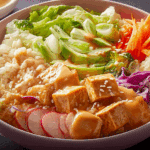
Tofu and Veggie Buddha Bowl With Miso Dressing
Description
This vibrant Tofu and Veggie Buddha Bowl with Miso Dressing is loaded with roasted vegetables, crispy tofu, and a creamy, umami-packed dressing. Perfect for meal prep or a nourishing dinner.
Ingredients
- Extra-Firm Tofu: 1 block (14 oz), pressed and cubed
- Olive Oil: 2 tablespoons
- Tamari or Soy Sauce: 1 tablespoon
- Sweet Potato: 1 large, diced
- Broccoli Florets: 2 cups
- Carrot: 1 large, shredded
- Red Cabbage: 1 cup, thinly sliced
- Cooked Brown Rice or Quinoa: 2 cups
- Avocado: 1, sliced
- Sesame Seeds: 1 tablespoon
For the Miso Dressing:
- White Miso Paste: 2 tablespoons
- Rice Vinegar: 1 tablespoon
- Maple Syrup: 1 teaspoon
- Toasted Sesame Oil: 1 teaspoon
- Water: 2–3 tablespoons
Instructions
- Preheat Your Equipment: Set oven to 400°F (200°C). Line a baking sheet with parchment paper.
- Combine Ingredients: Toss tofu with olive oil and tamari. Toss sweet potatoes and broccoli with oil, salt, and pepper.
- Prepare Your Cooking Vessel: Spread tofu and veggies on a baking sheet and roast for 25 minutes, flipping halfway.
- Assemble the Dish: Blend or whisk dressing ingredients until smooth. Adjust consistency with water as needed.
- Cook to Perfection: Prepare grains and slice fresh veggies while tofu roasts.
- Finishing Touches: Build bowls with grains, veggies, tofu, and avocado. Drizzle with dressing.
- Serve and Enjoy: Sprinkle with sesame seeds and serve warm or chilled.
Notes
- Press tofu for crispier results.
- Store dressing separately to keep ingredients fresh.
- Add chili flakes or sriracha for heat.

